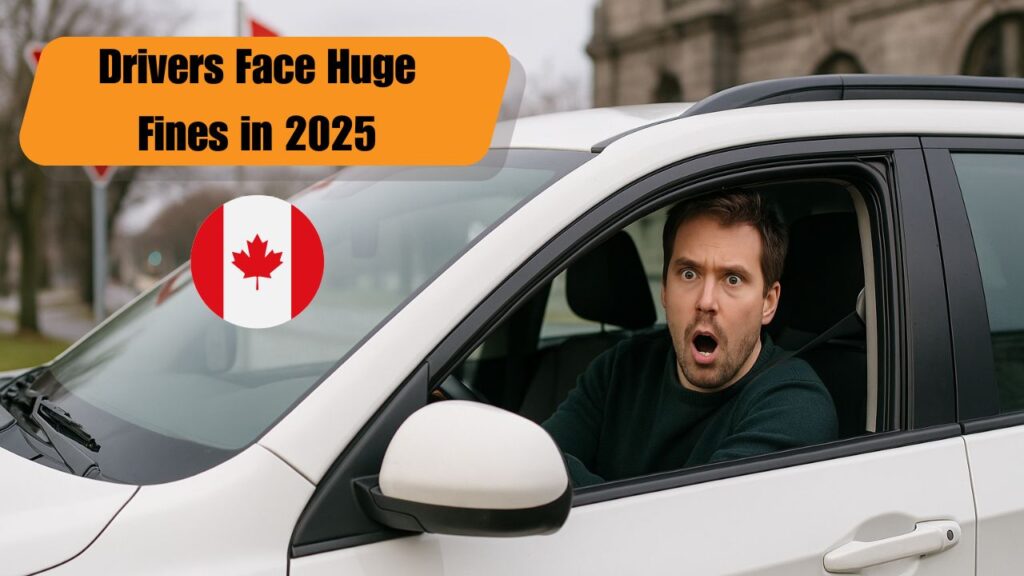Canada New Road Rules 2025 – Canada’s driving laws are undergoing a major transformation in 2025, and drivers across the country are being caught off guard. With strict new road rules now officially implemented, motorists face tougher penalties and more responsibilities than ever before. From increased fines for speeding and distracted driving to stricter rules around license renewals and vehicle inspections, the changes are designed to improve safety—but not without controversy. The Canadian government has emphasized road safety as a top priority, and these changes are already affecting how Canadians drive every day. Here’s a full breakdown of what’s changed and what it means for you.

New Driving Laws Now Enforced for Canadian Motorists
The updated driving laws introduced in 2025 bring several changes that all Canadian motorists must adhere to. One of the biggest updates includes mandatory dashcam installations in commercial vehicles and tighter restrictions on mobile phone use while driving. These laws aim to reduce distracted driving cases and improve road safety nationwide. The federal transportation agency has rolled out these changes after an alarming rise in road accidents. Additionally, the legal blood alcohol limit has been slightly lowered, and stricter seatbelt regulations are in place for rear-seat passengers. Drivers found violating these new mandates face increased penalties, including fines up to $2,500 and potential license suspensions.
Stricter Vehicle Rules Announced by the Canadian Government
Canadian government authorities have implemented sweeping changes under the new vehicle rules that target emissions compliance and roadworthiness. All cars older than ten years must now pass a bi-annual inspection to ensure they meet environmental and safety standards. These vehicle laws also extend to electric vehicles (EVs), requiring specific charging safety standards and certified installation for home chargers. Moreover, fines for expired insurance or unregistered vehicles have been raised sharply under these new policies. By focusing on roadworthy vehicle compliance, the government hopes to minimize accidents from faulty cars and improve public road infrastructure nationwide. These steps are seen as proactive measures to modernize Canada’s transportation system while protecting citizens.
| Rule Update | Effective From | Penalty/Fine | Applies To |
|---|---|---|---|
| Dashcams Mandatory | 1 Jan 2025 | Up to $1,000 | Commercial Vehicles |
| Phone Usage Ban | 15 Feb 2025 | Up to $2,500 | All Drivers |
| Rear Seatbelt Law | 1 Mar 2025 | $500 per offense | All Vehicles |
| Lower BAC Limit | 10 Jan 2025 | License Suspension | All Drivers |
| Bi-Annual Vehicle Check | 1 Apr 2025 | $750 if skipped | Vehicles over 10 years |
2025 Canadian Road Regulations Impact All Provinces
These 2025 road regulations are not limited to any one area—they apply uniformly across all Canadian provinces. Whether you’re in Ontario, British Columbia, Quebec, or Alberta, the new rules are in force. Provincial governments have been instructed to work closely with local transport departments to ensure smooth implementation and awareness. In rural areas especially, there’s been an emphasis on educating older drivers and upgrading road signs to meet national standards. Police have also been given updated ticketing tools and mobile scanners to enforce road law compliance efficiently. With over 20 million drivers affected, understanding these new guidelines is essential for all residents on Canadian roads.
Canada’s 2025 Road Safety Strategy Explained
The 2025 road safety strategy in Canada focuses heavily on prevention through both education and enforcement. Authorities are investing in awareness campaigns to highlight the risks of impaired driving, fatigue, and distracted behavior behind the wheel. Schools and driving schools have also been instructed to update their curricula to reflect the new traffic law changes. Technology will play a major role as well—with AI-powered traffic monitoring systems being piloted in key cities like Toronto and Vancouver. The long-term goal is to reduce traffic fatalities by 25% over the next three years. For Canadians, this means adapting to a stricter but ultimately safer driving environment.
Frequently Asked Questions (FAQs)
1. When did the new driving laws in Canada take effect?
The laws started rolling out in phases from January 1, 2025.
2. Are the rules the same across all Canadian provinces?
Yes, the 2025 laws apply nationwide regardless of the province.
3. Is dashcam installation required for private cars?
No, only commercial vehicles are required to have dashcams installed.
 📅 CRA Payment Dates 2025: Full Schedule Released — See When Your Benefits & Rebates Are Coming!
📅 CRA Payment Dates 2025: Full Schedule Released — See When Your Benefits & Rebates Are Coming!
4. What’s the new legal blood alcohol limit in Canada?
The new BAC limit is now 0.04%, reduced from the previous 0.05%.



